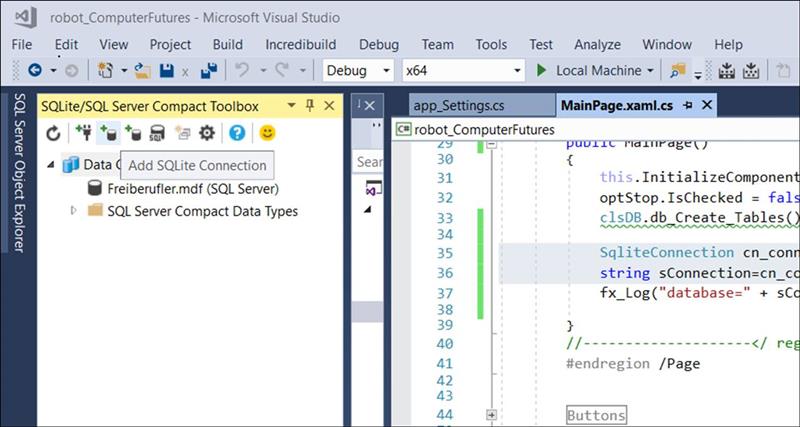
- #Open sqllite database with sql studio update#
- #Open sqllite database with sql studio android#
- #Open sqllite database with sql studio password#
Here is an example demonstrating the use of SQLite Database. Public class DBHelper extends SQLiteOpenHelper
#Open sqllite database with sql studio update#
It automatically manages the creation and update of the database. This method returns true if the cursor is closed and return false otherwiseįor managing all the operations related to the database, an helper class has been given and is called SQLiteOpenHelper. This method returns the current position of the cursor in the table This method returns the total number of rows in the cursor This method returns the array of all the column names of the table.

This method returns the name of the column by specifying the index of the column This method returns the index number of a column by specifying the name of the column This method return the total number of columns of the table. There are other functions available in the Cursor class that allows us to effectively retrieve the data.
#Open sqllite database with sql studio password#
String password = resultSet.getString(1) String username = resultSet.getString(0) We can move the cursor forward and retrieve the data.Ĭursor resultSet = mydatbase.rawQuery("Select * from TutorialsPoint",null) We will call a method of this class called rawQuery and it will return a resultset with the cursor pointing to the table. We can retrieve anything from database using an object of the Cursor class. This method not only insert data, but also used to update or modify already existing data in database using bind arguments Another method that also does the same job but take some additional parameter is given below Sr.No This will insert some values into our table in our database. Mydatabase.execSQL("INSERT INTO TutorialsPoint VALUES('admin','admin') ") Mydatabase.execSQL("CREATE TABLE IF NOT EXISTS TutorialsPoint(Username VARCHAR,Password VARCHAR) ") We can create table or insert data into table using execSQL method defined in SQLiteDatabase class.

This method is similar to above method but it takes the File object as a path rather then a string. OpenOrCreateDatabase(File file, SQLiteDatabase.CursorFactory factory) This method is equivalent to openDatabase method. It not only opens but create the database if it not exists.

OpenOrCreateDatabase(String path, SQLiteDatabase.CursorFactory factory) It is similar to the above method as it also opens the existing database but it does not define any handler to handle the errors of databases

OpenDatabase(String path, SQLiteDatabase.CursorFactory factory, int flags) The common flags mode could be OPEN_READWRITE OPEN_READONLY This method only opens the existing database with the appropriate flag mode. OpenDatabase(String path, SQLiteDatabase.CursorFactory factory, int flags, DatabaseErrorHandler errorHandler) SQLiteDatabase mydatabase = openOrCreateDatabase("your database name",MODE_PRIVATE,null) Īpart from this, there are other functions available in the database package, that does this job. It returns an instance of SQLite database which you have to receive in your own object.Its syntax is given below In order to create a database you just need to call this method openOrCreateDatabase with your database name and mode as a parameter. The main package is that contains the classes to manage your own databases Database - Creation In order to access this database, you don't need to establish any kind of connections for it like JDBC,ODBC e.t.c Database - Package SQLite supports all the relational database features.
#Open sqllite database with sql studio android#
Android comes in with built in SQLite database implementation. SQLite is a opensource SQL database that stores data to a text file on a device.


 0 kommentar(er)
0 kommentar(er)
